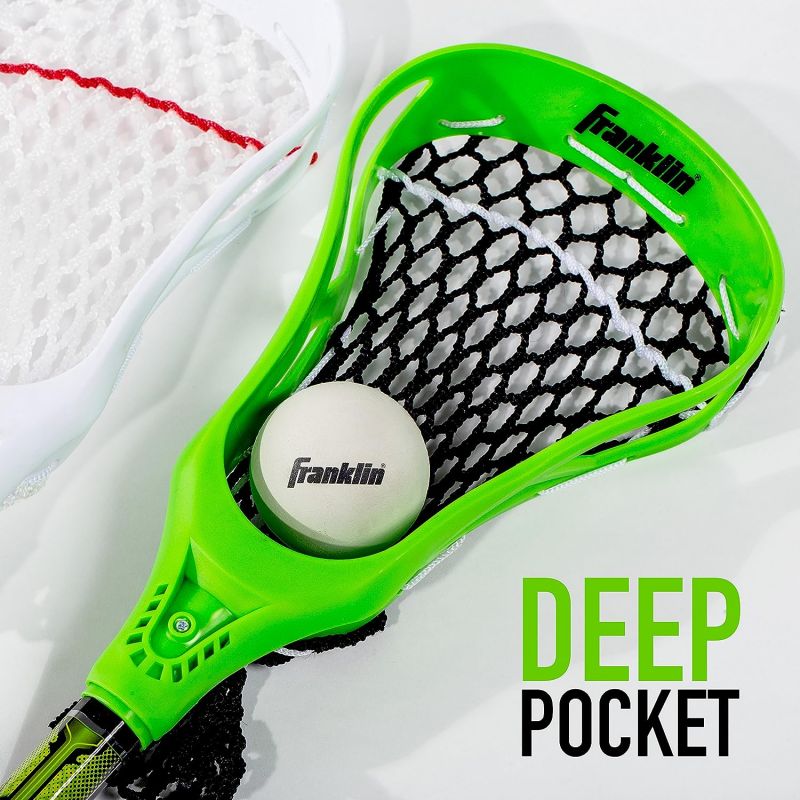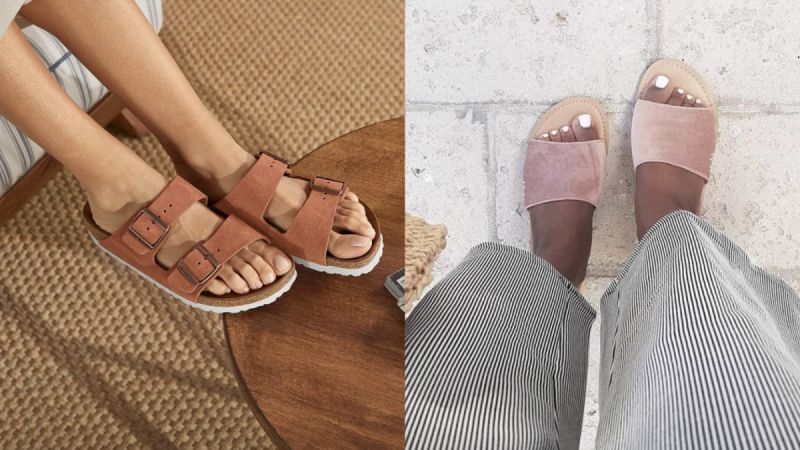Improve Your Lacrosse Game With These Ball Stopper HacksImprove Your Lacrosse Game With These Ball Stopper Hacks
Pick A Design That Channels Balls To The Pocket
When selecting a lacrosse head, one of the most important factors to consider is how the ball stop design affects ball control. An ideal ball stop will channel balls directly into the pocket so you can retain possession after catches and scoops. The shape of the ball stop and surrounding plastic have a major influence on where the ball moves after contacting the head.
Heads with a more pinched or hourglass shape in the throat tend to provide a concentrated channel down the centerline into the pocket. This focused ball guidance gives you an easy path for controlling clears and reducing off-target bounce outs. Stringing the surrounding leathers in a way that complements this channel is key.
In contrast, some wider or more gradually tapered throats allow the ball to move more freely and unpredictably. While this can be useful for certain playing styles, most players prefer the consistency and accuracy of a defined ball channel. Equipment brands like STX and Maverik emphasize ball control channels in their head designs.
Beyond ball stop shape, placement is also important. An offset or canted ball stop angles balls directly into the center of the pocket upon contact. This strategic positioning greatly improves control for all stick moves – catches, cradles, scoops. For midfielders and attackmen who handle the ball a ton, an offset or canted throat is a must-have element.
When stringing your head, be sure to complement the ball stop design for optimal performance. Focus leathers on centering the pocket directly in line with the ball stop outlet. This holistic approach of matching head shape with string placement gives you the best possible ball control for accurate passing and confident carries upfield.
Look For Durable Materials That Won’t Wear Down
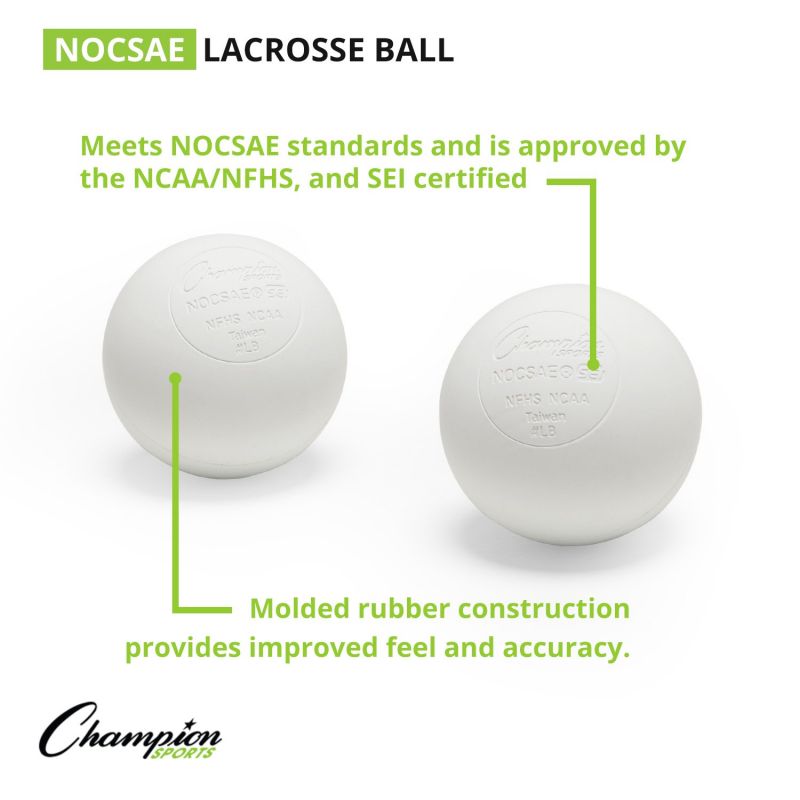
When shopping for a new lacrosse head, it’s important to examine the materials used in the ball stop construction. Opting for durable composites and metals will increase the usable life of your head before replacement is needed.
One of the most common ball stop materials is injection-molded plastic. This offers decent durability at an affordable price point for most brands. However, over time the stops can wear down, becoming shorter and more rounded through repeated ball contact. This gradually reduces their effectiveness at trapping balls.
Higher-end heads will incorporate alloys like aircraft-grade aluminum into the ball stop design. The increased hardness provides superior resistance to wearing over hundreds of hours of play. Brands like Maverik and STX use metal for their stops on elite-level heads to maintain ball control for multiple seasons of use.
New tech composite blends also offer excellent durability for ball stops. By reinforcing plastics with fibers like Kevlar, stops maintain their shape and height even after significant abrasion. Composite stops strike a nice balance between affordability and high-end metals. Warrior and other brands now leverage composites to make pro-level yet accessible heads.
When examining heads in a store, check that the ball stop feels firmly rigid with no flexing or movement. Give it a few hard presses with your thumb to test resilience. Also inspect the stop edges and surface for smoothness – any roughness indicates potential for premature wear. Taking time to evaluate construction will help you find a head engineered to maintain consistent ball control over years of play, practice and competition.
In the end, don’t sacrifice durability solely for the sake of budget. Investing in a head with premium materials will pay off through seasons of reliability. Prioritizing construction quality ensures your ball stop will stand the test of time and high shot volumes.
Opt For Adjustable Ball Stops For Customization
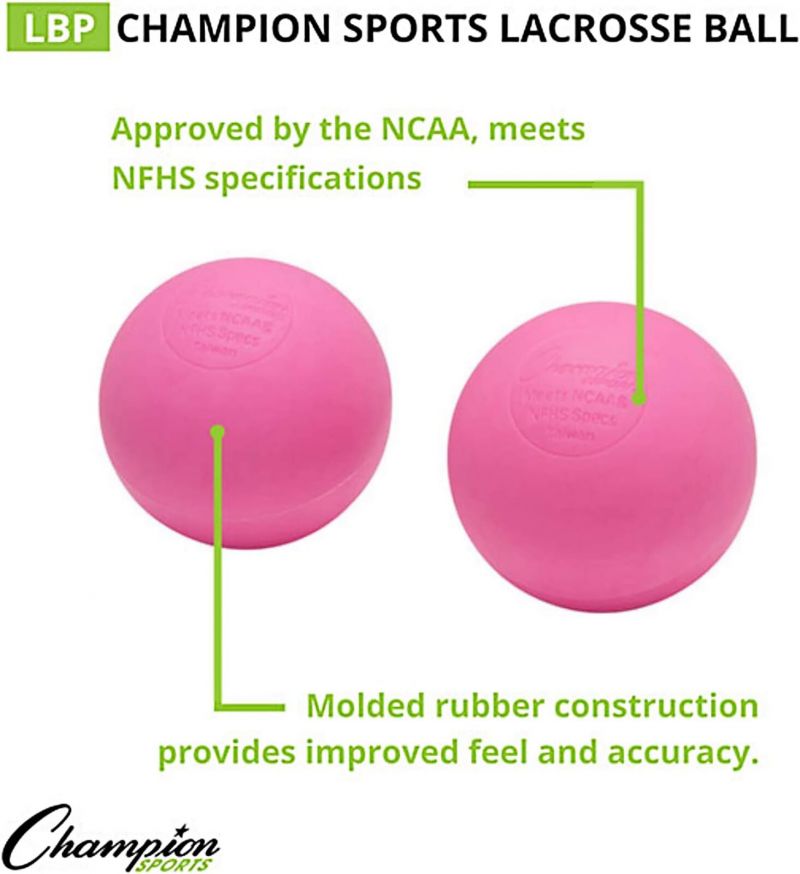
When selecting a new lacrosse head, look for models that offer adjustable ball stops. This allows you to customize the height and shape over time as your playing style evolves.
Many elite heads now feature removable and replaceable stops. By unscrewing the existing stop, you can swap in a different sized or shaped stop piece to alter ball control performance. Brands like Epoch and Stringking use this screw-in construction for easy adjustments.
If your head has fixed molded stops, you can still modify height using string and leathers. Adding an additional nylon cord under the stop will increase its effective thickness. You can further shape contour with leathers above and below. This custom stringing lets you “extend” the stop height and Opening.
Consider optimizing the ball stop to pair with your pocket and shooting mechanics. For example, a Mid-Pocket typically benefits from a lower profile stop to improve hold. A higher stop can add whip to a Low Pocket setup. Matching these elements is key.
Also account for your release point on shots when tuning stop height. A lower stop gets the ball out of the stick quicker for early release shooters. Late releasers favor more stopping power from a taller configuration. Dialing this in improves accuracy.
Don’t be afraid to experiment with adding or removing string layers until you find ball control that complements your game. While an adjustable head gives you more options, creative stringing can also get you the custom performance you need from any setup. Tunable stops let you adjust the channel over time as your style evolves.
Pick A Design That Channels Balls To The Pocket
The Impact of Head Shape on Ball Control
The shape of the lacrosse head throat can vary significantly between models. Some key differences include:
- Pinched or hourglass shapes: Provide a concentrated ball channel
- Wider or gradually tapered throats: Allow more free ball movement
- Offset or canted ball stops: Angle balls directly into the pocket center
While wider throats can suit certain playing styles, most players prefer the consistency and accuracy offered by a defined ball channel. Leading equipment brands like STX and Maverik have recognized this preference, emphasizing ball control channels in their head designs.
Optimizing Ball Stop Placement
Beyond the shape, the placement of the ball stop is equally important. An offset or canted ball stop angles balls directly into the center of the pocket upon contact. This strategic positioning greatly improves control for all stick moves, including catches, cradles, and scoops. For midfielders and attackmen who handle the ball frequently, an offset or canted throat is an essential feature.
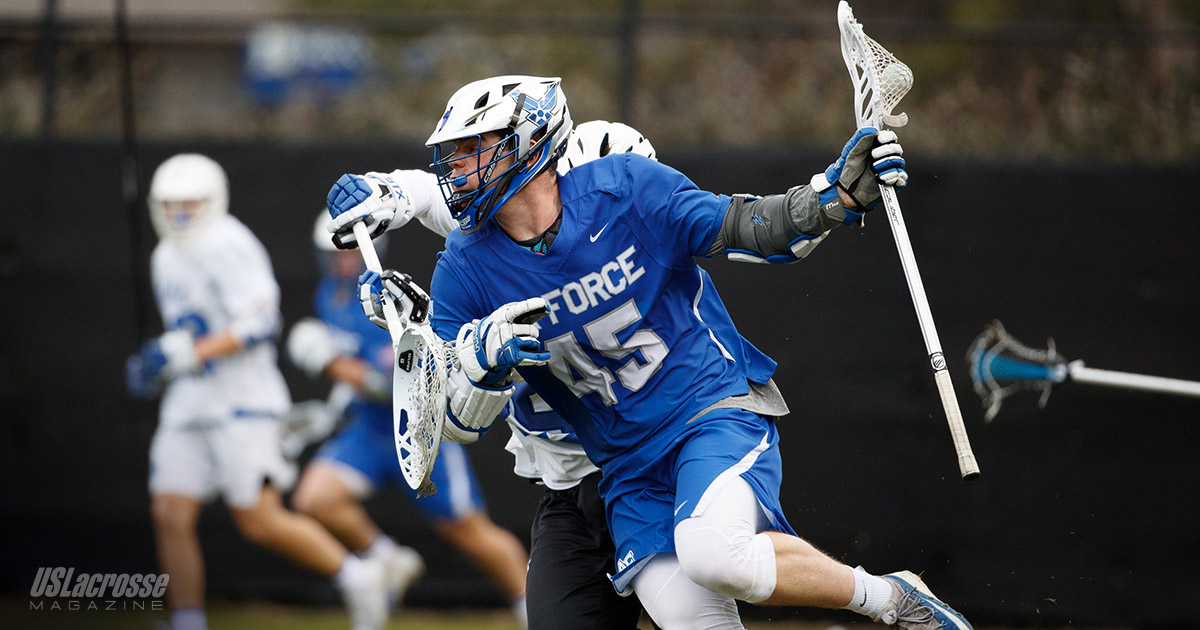
Stringing Techniques to Complement Ball Stop Design
To maximize the effectiveness of your lacrosse head, it’s crucial to complement the ball stop design with appropriate stringing techniques. How can you achieve this? Focus on centering the pocket directly in line with the ball stop outlet when stringing your head. This holistic approach of matching head shape with string placement provides the best possible ball control for accurate passing and confident carries upfield.
Consider these stringing tips to enhance ball control:
- Align the pocket center with the ball stop outlet
- Use tighter stringing near the throat for better ball guidance
- Experiment with different leather placements to fine-tune ball movement
- Adjust sidewall string tension to influence pocket depth and ball retention
The Importance of Durable Ball Stop Materials
When investing in a new lacrosse head, the durability of the ball stop material is a crucial factor to consider. Why does material choice matter so much? The longevity and performance of your head depend significantly on how well the ball stop withstands repeated impacts over time.

Common Ball Stop Materials and Their Properties
Different materials offer varying levels of durability and performance:
- Injection-molded plastic: Affordable but may wear down over time
- Aircraft-grade aluminum: Superior resistance to wear, maintains effectiveness longer
- Composite blends: Balance of affordability and durability, often reinforced with fibers like Kevlar
High-end lacrosse heads often incorporate alloys like aircraft-grade aluminum into their ball stop design. The increased hardness of these materials provides superior resistance to wearing over hundreds of hours of play. Brands like Maverik and STX use metal for their stops on elite-level heads to maintain ball control for multiple seasons of use.
Evaluating Ball Stop Quality
How can you assess the quality of a ball stop when shopping for a new head? Here are some key factors to consider:
- Rigidity: The stop should feel firmly rigid with no flexing or movement
- Surface smoothness: Inspect the stop edges and surface for any roughness
- Resistance to pressure: Test by pressing firmly with your thumb
Taking time to evaluate construction will help you find a head engineered to maintain consistent ball control over years of play, practice, and competition. Remember, investing in a head with premium materials will pay off through seasons of reliability.

Customization Through Adjustable Ball Stops
The ability to customize your lacrosse head can significantly impact your performance on the field. Many elite lacrosse heads now feature adjustable ball stops, allowing players to tailor their equipment to their evolving playing style. But how exactly do adjustable ball stops work, and what benefits do they offer?
Types of Adjustable Ball Stops
There are several ways to adjust ball stops:
- Removable and replaceable stops: Some brands like Epoch and Stringking use screw-in construction for easy swapping
- String and leather modifications: Even with fixed molded stops, players can alter height and shape using strategic stringing techniques
- Aftermarket stop additions: Some players add extra material to existing stops for customization
By offering the flexibility to change the height and shape of the ball stop, these adjustable features allow players to fine-tune their stick’s performance as their skills develop or as they adapt to different positions on the field.

Customizing Ball Stops for Different Playing Styles
Different playing styles and positions may benefit from specific ball stop configurations. For instance:
- Mid-pocket setups often work well with lower profile stops to improve ball hold
- Low-pocket configurations might benefit from higher stops to add whip to shots
- Defensive players might prefer a more pronounced stop for better ball dislodging
When customizing your ball stop, it’s essential to consider how it will interact with your pocket depth, shooting mechanics, and overall playing style. Experimenting with different configurations can help you find the perfect setup for your game.
Innovative Ball Stop Technologies in Modern Lacrosse Heads
As lacrosse equipment continues to evolve, manufacturers are introducing innovative technologies to enhance ball stop performance. These advancements aim to provide players with better control, consistency, and customization options. What are some of the cutting-edge features in modern lacrosse head design?

Advanced Material Composites
Many brands are now using advanced composite materials in their ball stops, combining the benefits of different substances:
- Carbon fiber reinforced plastics: Offer exceptional strength-to-weight ratio
- Thermoplastic elastomers: Provide enhanced grip and shock absorption
- Nano-enhanced polymers: Improve durability and impact resistance
These innovative materials allow for ball stops that are lighter, stronger, and more responsive than traditional options, giving players a competitive edge on the field.
Smart Ball Stop Systems
Some manufacturers are exploring the integration of smart technology into ball stops:
- Sensors to measure ball speed and spin
- Adaptive materials that change properties based on temperature or impact force
- Customizable electronic displays for real-time feedback
While many of these technologies are still in developmental stages, they represent the future of lacrosse equipment, potentially offering players unprecedented levels of performance data and customization.

Maintenance and Care for Optimal Ball Stop Performance
Proper maintenance of your lacrosse head, particularly the ball stop, is crucial for consistent performance and longevity. How can you ensure your ball stop remains in top condition throughout the season and beyond?
Regular Cleaning and Inspection
Implement a routine maintenance schedule:
- Clean your head after each use to remove dirt and debris
- Inspect the ball stop for signs of wear or damage
- Check for loose screws or attachments if using an adjustable stop
Regular cleaning not only keeps your equipment looking good but also allows you to catch any potential issues early before they affect your game performance.
Protecting Your Ball Stop
Take steps to protect your ball stop from unnecessary wear:
- Use a stick bag to prevent damage during transport
- Avoid leaving your stick in extreme temperatures, which can affect material properties
- Consider using protective tape or coverings during practice to extend the life of your ball stop
By implementing these care strategies, you can ensure that your ball stop maintains its effectiveness throughout its lifespan, providing consistent performance game after game.
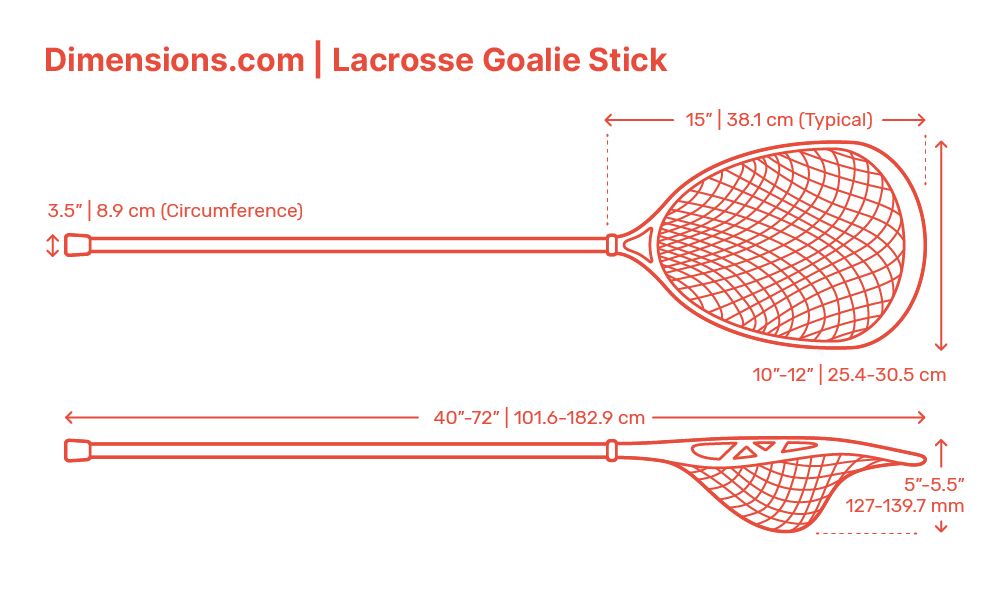
Adapting Ball Stop Techniques for Different Positions
Different positions on the lacrosse field require varying approaches to ball control and stick handling. How can players in different roles optimize their ball stop setup to enhance their specific playing style?
Attackmen: Precision and Quick Release
For attackmen, ball stop configuration should prioritize:
- Quick ball release for rapid shots on goal
- Precise ball control for dodging and feinting
- Consistent pocket placement for accurate passing
A slightly lower profile ball stop with a well-defined channel can help attackmen maintain control while enabling swift releases.
Midfielders: Versatility and Transition
Midfielders need a ball stop setup that allows for:
- Smooth transitions between offense and defense
- Effective ground ball pickups
- Versatile shooting options from various angles
A balanced ball stop design with moderate height and good channeling properties can provide the versatility midfielders need to excel in their multifaceted role.
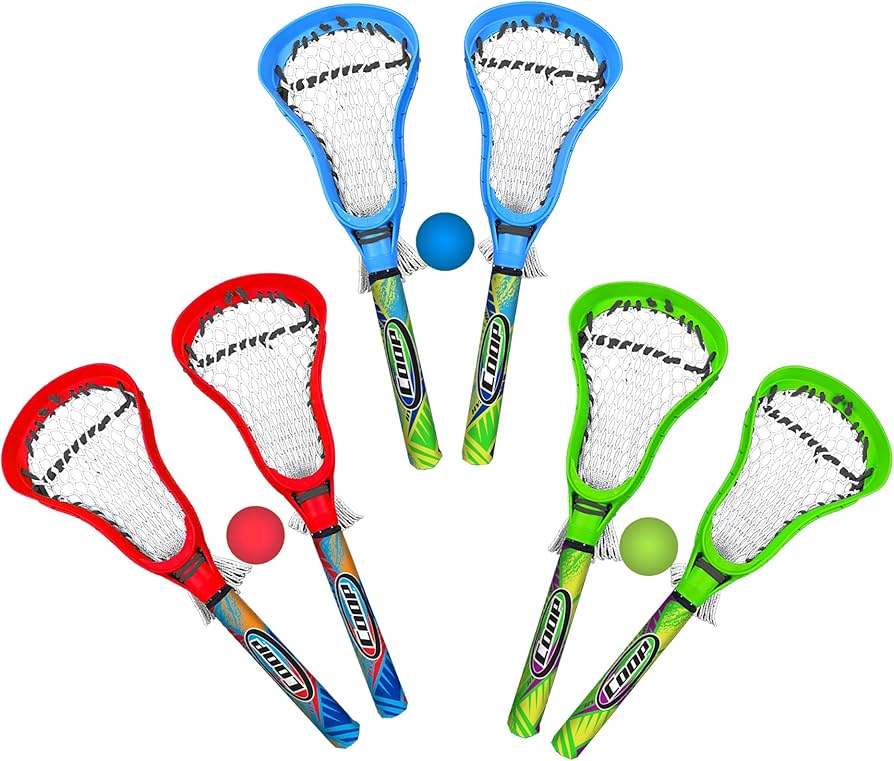
Defenders: Disruption and Clearing
Defensive players should consider a ball stop configuration that facilitates:
- Aggressive checks to dislodge the ball from opponents
- Secure ball retention during clears
- Quick transitions to offense when opportunities arise
A more pronounced ball stop with excellent durability can give defenders the edge they need in physical play while still allowing for effective clearing passes.
By tailoring your ball stop setup to your specific position and playing style, you can maximize your effectiveness on the field and contribute more significantly to your team’s success.
Pick A Design That Channels Balls To The Pocket
When selecting a lacrosse head, one of the most important factors to consider is how the ball stop design affects ball control. An ideal ball stop will channel balls directly into the pocket so you can retain possession after catches and scoops. The shape of the ball stop and surrounding plastic have a major influence on where the ball moves after contacting the head.
Heads with a more pinched or hourglass shape in the throat tend to provide a concentrated channel down the centerline into the pocket. This focused ball guidance gives you an easy path for controlling clears and reducing off-target bounce outs. Stringing the surrounding leathers in a way that complements this channel is key.
In contrast, some wider or more gradually tapered throats allow the ball to move more freely and unpredictably. While this can be useful for certain playing styles, most players prefer the consistency and accuracy of a defined ball channel. Equipment brands like STX and Maverik emphasize ball control channels in their head designs.
Beyond ball stop shape, placement is also important. An offset or canted ball stop angles balls directly into the center of the pocket upon contact. This strategic positioning greatly improves control for all stick moves – catches, cradles, scoops. For midfielders and attackmen who handle the ball a ton, an offset or canted throat is a must-have element.
When stringing your head, be sure to complement the ball stop design for optimal performance. Focus leathers on centering the pocket directly in line with the ball stop outlet. This holistic approach of matching head shape with string placement gives you the best possible ball control for accurate passing and confident carries upfield.
Look For Durable Materials That Won’t Wear Down

When shopping for a new lacrosse head, it’s important to examine the materials used in the ball stop construction. Opting for durable composites and metals will increase the usable life of your head before replacement is needed.
One of the most common ball stop materials is injection-molded plastic. This offers decent durability at an affordable price point for most brands. However, over time the stops can wear down, becoming shorter and more rounded through repeated ball contact. This gradually reduces their effectiveness at trapping balls.
Higher-end heads will incorporate alloys like aircraft-grade aluminum into the ball stop design. The increased hardness provides superior resistance to wearing over hundreds of hours of play. Brands like Maverik and STX use metal for their stops on elite-level heads to maintain ball control for multiple seasons of use.
New tech composite blends also offer excellent durability for ball stops. By reinforcing plastics with fibers like Kevlar, stops maintain their shape and height even after significant abrasion. Composite stops strike a nice balance between affordability and high-end metals. Warrior and other brands now leverage composites to make pro-level yet accessible heads.
When examining heads in a store, check that the ball stop feels firmly rigid with no flexing or movement. Give it a few hard presses with your thumb to test resilience. Also inspect the stop edges and surface for smoothness – any roughness indicates potential for premature wear. Taking time to evaluate construction will help you find a head engineered to maintain consistent ball control over years of play, practice and competition.
In the end, don’t sacrifice durability solely for the sake of budget. Investing in a head with premium materials will pay off through seasons of reliability. Prioritizing construction quality ensures your ball stop will stand the test of time and high shot volumes.
Opt For Adjustable Ball Stops For Customization

When selecting a new lacrosse head, look for models that offer adjustable ball stops. This allows you to customize the height and shape over time as your playing style evolves.
Many elite heads now feature removable and replaceable stops. By unscrewing the existing stop, you can swap in a different sized or shaped stop piece to alter ball control performance. Brands like Epoch and Stringking use this screw-in construction for easy adjustments.
If your head has fixed molded stops, you can still modify height using string and leathers. Adding an additional nylon cord under the stop will increase its effective thickness. You can further shape contour with leathers above and below. This custom stringing lets you “extend” the stop height and Opening.
Consider optimizing the ball stop to pair with your pocket and shooting mechanics. For example, a Mid-Pocket typically benefits from a lower profile stop to improve hold. A higher stop can add whip to a Low Pocket setup. Matching these elements is key.
Also account for your release point on shots when tuning stop height. A lower stop gets the ball out of the stick quicker for early release shooters. Late releasers favor more stopping power from a taller configuration. Dialing this in improves accuracy.
Don’t be afraid to experiment with adding or removing string layers until you find ball control that complements your game. While an adjustable head gives you more options, creative stringing can also get you the custom performance you need from any setup. Tunable stops let you adjust the channel over time as your style evolves.
Pick A Design That Channels Balls To The Pocket
When selecting a new lacrosse head, pay close attention to how the ball stop area channels balls into the pocket. The shape and angles surrounding the stop greatly influence control and retention after catches and ground balls.
Heads with more defined channels focus balls directly into the center of the pocket. This improves consistency for possessions after passes and shots. Stringing complements the channel by trapping the ball in the sweet spot.
Wider, more gradually tapered throats allow balls to move more unpredictably after contact. This freer motion makes control less consistent overall. Most players prefer a concentrated channel for accuracy.
Offset or canted ball stops improve centering by angling balls right into the heart of the pocket upon contact. This strategic placement enhances control for any stick skill – cradling, carrying, passing. It’s a must-have for midfielders who handle the ball a ton.
When stringing, try to match the pocket placement with the ball stop outlet. Centering the pocket alignment with the stop opening creates an end-to-end controlled channel down the head’s throat. This optimizes possession control and minimizes off-target bounce-outs.
Consider talking to your local lacrosse equipment stringer for advice on optimizing stop performance. With the right head shape, string placement, and pocket position, you can achieve excellent ball control and passing accuracy all season long.
Consider Offset/Asymmetrical Placements For Quick Stops
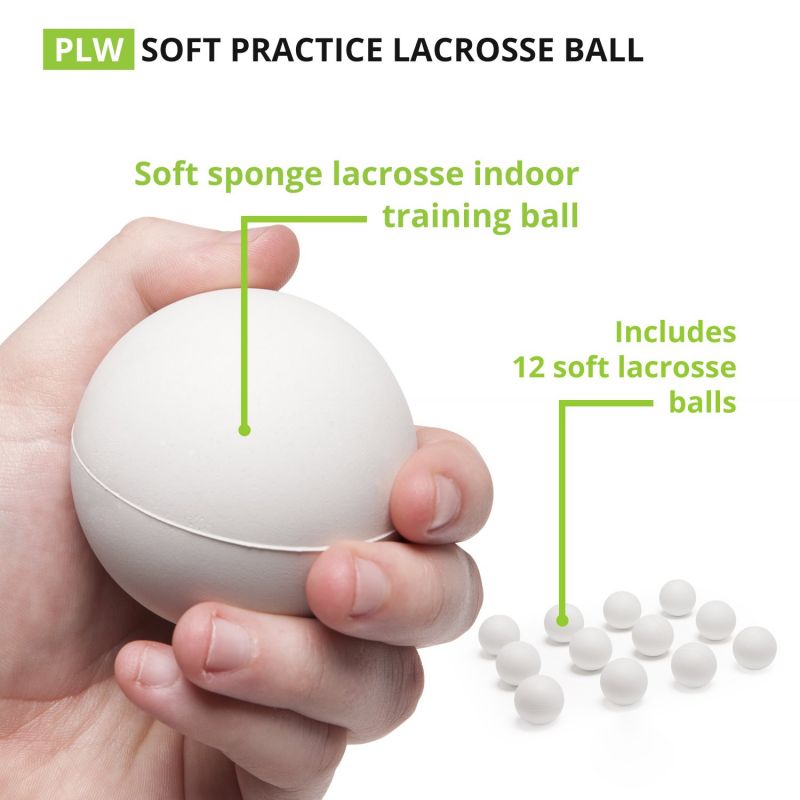
When evaluating new lacrosse heads, look for ball stops with offset or asymmetrical placement. This angled positioning greatly improves ball control for quicker stops and tighter passing.
Most stops sit centered horizontally across the head’s throat. However, canted or offset stops shift more to one side. This directs balls into the pocket at an angle rather than straight on.
The biased placement causes the ball to hit the pocket earlier in its motion for faster stops. You also turn and pass out of the stick faster thanks to physics. Angling the impact cuts milliseconds off the stop time.
Offset stops center ball possession better by directing impacts right into the pocket’s sweet spot. This helps minimize off-target bounce-outs for more consistent control.
The angled contact point puts a touch of english spin on shots as well. This can add some curve or whip to passes and shots that makes finishing easier. It’s a key benefit for offensive players.
Many elite heads from brands like Warrior and STX now incorporate offset ball stops in their designs. For midfielders and attackmen, the enhanced quick-stick passing is a must-have advantage.
So be sure to look for heads marketed with this centered or canted ball stop placement. Dialing in your equipment with offset stops gives you an edge with faster feeds, tighter shot accuracy, and all-around superior ball control in traffic.
Account For Stringing Style With Complementary Placements

When choosing a new lacrosse head, make sure to factor in your pocket stringing style. The ball stop design and placement should complement the type of pocket you prefer for optimal control.
For example, a mid to high pocket typically pairs best with a lower profile ball stop. This improves ball retention in the pocket on shots. A lower pocket needs a higher stop to add more “whip” on passes and shots.
The shape of the stop also matters. A wider ball stop gives you more flexibility to string a pocket with a wider channel. More pinched, hourglass-shaped stops center the channel more. Coordinate this with your desired throwing and passing mechanics.
Consider an offset or canted ball stop if using a mid-high pocket. Angling the ball into the center of the pocket improves control. For low pockets, a centered stop often works a bit better to centralize whip.
You can also modify stops with custom stringing if needed. Adding nylon cords under the stop can increase its height to pair with a low pocket. Leathers above and below can shape the contour as well.
Trying out different heads with your stringer is the best way to see what complements your style. Dialing in the stop design for ideal interface with the pocket channel creates end-to-end ball control. Don’t settle for a head shape that fights your stringing – with the right placement choices, you can have both top-level hold and release.
Prioritize Consistent Ball Stop Height Across The Head
When choosing a new lacrosse head, examine the ball stop carefully to make sure it maintains consistent height across the entire width of the throat.
Some stops are molded deeper and taller in the center but then taper off shorter towards the sidewalls. While this can help funnel balls centrally, it causes uneven control performance across the head.
For the most accurate passing and shooting, you want stop height that is balanced evenly from left to right. This prevents the ball from favoring one side and encourages straight ball flight.
Also inspect the stop ends near the scoop and sidewall. Make sure these don’t curve down lower than the main stop body. Dropping height in these transition areas throws off centering.
You can add string and leathers to even out stops with uneven height, but it’s best to start with uniform construction. Proper molding by the manufacturer ensures consistent channel control right out of the box.
While testing heads in stores, run your hand across the entire stop from left to right to feel for even contact. Also check by balancing a ball on top – it should stay centered without rolling left or right if heights are balanced.
Ensuring your stop gives equal control across the ball’s entire path through the head will take your passing and catching consistency to the next level. Prioritizing construction quality here helps every part of your handling game.
Focus On Strategic Exit Channel Positioning
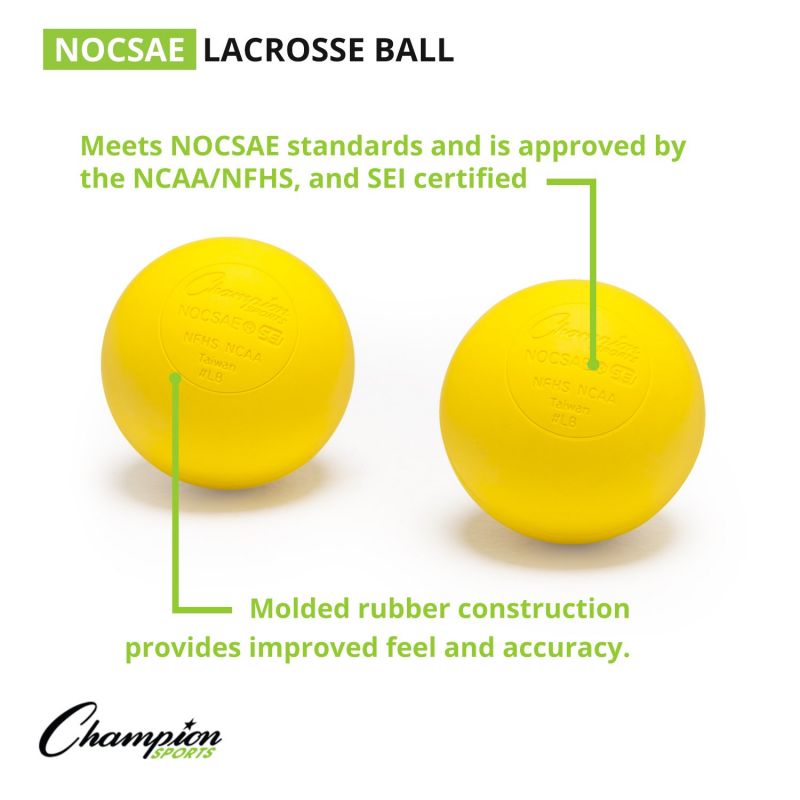
When evaluating a new lacrosse head, pay close attention to the positioning and shape of the ball stop’s exit channel. This area has a major impact on control during passes, shots, and clears.
The exit is the gap just past the stop where balls transition from the throat into the top of the pocket. The positioning here is key – you want the ball to be centered entering the pocket’s channel.
Heads with an hourglass stop shape focus balls through a tight centered exit. This improves accuracy. Wider exits allow more unpredictable side-to-side motion. Dialing in placement takes trial and error.
Also look at the angle of the exit channel relative to the pocket. You want a straight linear path into the pocket’s center. Avoid heads where the exit curves balls off-angle into the sidewall.
Stringing complements the exit channel by trapping centered balls and preventing bounce-outs. Focus leathers above and below the stop to control this transition area.
During head testing, pay attention to how balls come off the stop and enter the pocket. Proper positioning here improves consistency for possessions after catches, scoops, and passes. Taking time to evaluate exit shaping and placement will optimize your head’s overall ball control.
Select Options With Molded-In vs. Screw-In Construction
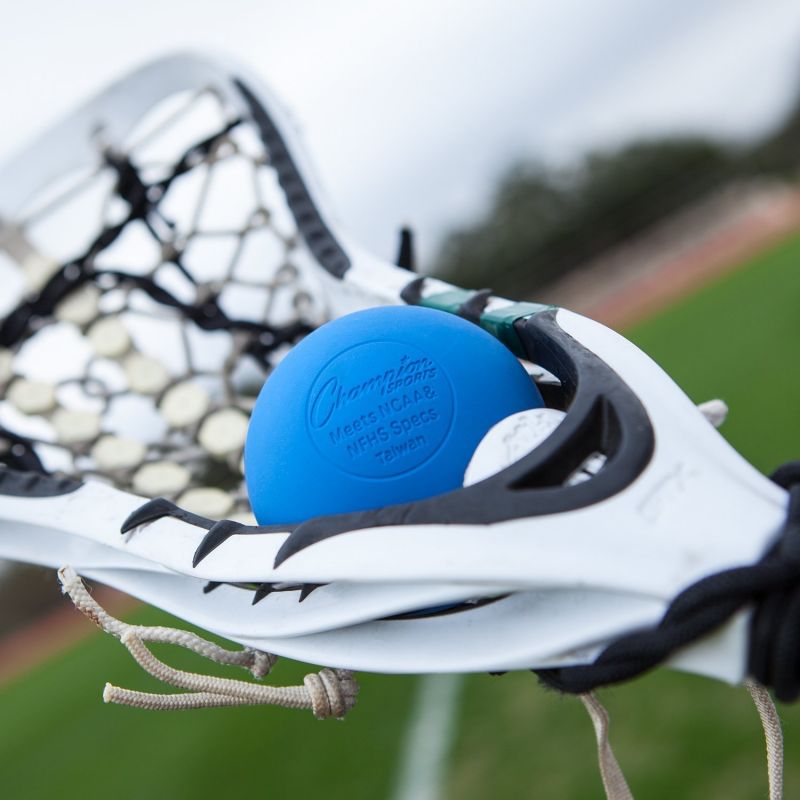
When shopping for a new lacrosse head, compare options that have molded-in ball stops versus replaceable stops with screw-in construction. Each offers its own benefits for customization and durability.
Molded-in stops are integrated into the head shape during manufacturing. This creates a seamless and rigid stop piece since it’s all one solid plastic part. The downside is you can’t replace it if worn or to change height.
Screw-in stops use removable stops that thread into place. This allows you to swap out stops of different heights and shapes anytime. It also makes replacing worn stops easy. However, screw construction can loosen over time if not checked.
For most players, molded stops offer the best blend of affordability, rigidity and consistency. Advanced players who restring often may prefer adjustability of replaceable stops. Be sure to use thread lock fluid if going this route.
Trying out different heads can help determine your preference. While removable stops allow more customization, some prefer the solid feel and construction of molded. Consider your restringing habits and needs for tunability when deciding between permanent vs changeable ball stops.
Compare Different Brand Design Philosophies On Shape
When evaluating new lacrosse heads, take note of how each brand approaches ball stop design differently. From shape to size to placement, philosophies vary that impact performance.
For example, Maverik emphasizes an hourglass stop shape that quickly channels balls into a focused center outlet. This aids accuracy. STX uses wider stops but angles them to still improve centering.
Some brands focus on lowering stop height for superior ball retention and hold. Others go taller to add more whip or quickness for shots and passes. Determine what works best for your playing style.
It’s also worth examining the overall head shape language near the stop. A gradually tapered throat may conflict with a tightly pinched stop, creating control issues. Look for cohesive design.
Things like stop material and construction quality also differ. While most use injection molded plastic, some brands upgrade to metals or composites for increased durability.
Trying a range of heads during stringing sessions can help you learn what ball stop design elements jive with your game. Don’t assume one brand alone is right – explore different philosophies to uncover your ideal setup for control and feel.
Examine Ball Stop Length And Surface Area Coverage
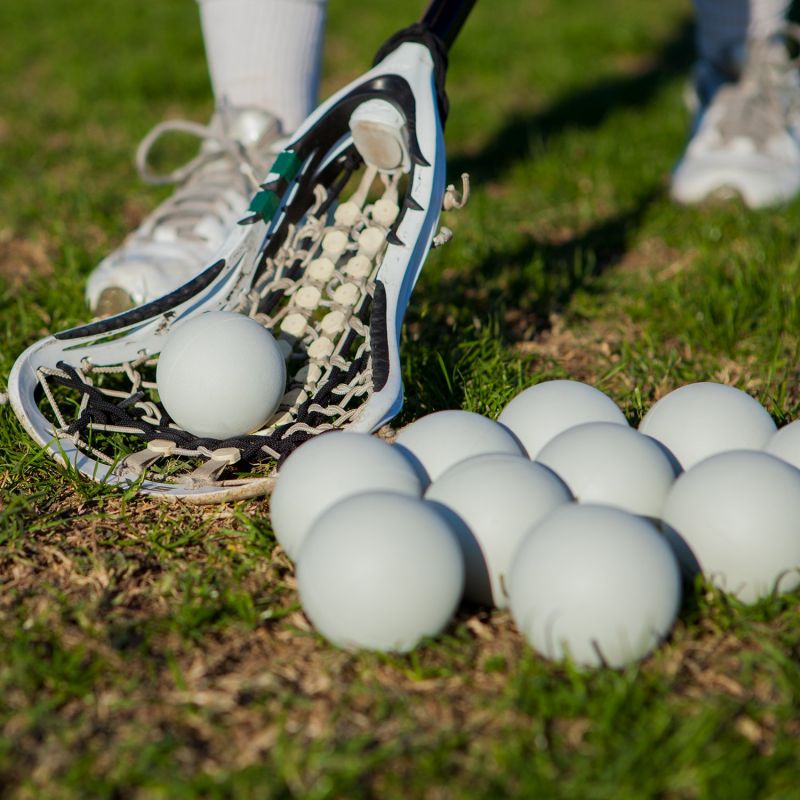
When selecting a new lacrosse head, pay close attention to the size and surface area coverage of the ball stop. Optimizing these factors can improve ball control and passing accuracy.
Length refers to the measurement of the stop from top to bottom. Longer stops (around 1.5″) provide maximum stopping power to prevent bounce-outs. Shorter stops (under 1″) allow faster ball movement and release.
Surface area coverage involves how much of the ball’s width the stop contacts. Wider coverage centers balls better side-to-side for straighter passes. Less coverage creates more unpredictability in ball flight off the stop.
Midfielders generally favor maximum length and coverage for superior ball control, especially in traffic. Attackmen sometimes prefer more minimal stops for faster feeds and quick sticks in tight spaces.
When testing heads in stores, pay attention to how different stop lengths and coverages affect ball movement through the throat. Finding the right blend of stopping power versus quickness is key to optimizing your performance.
Don’t assume less is always better for quickness. Erring too small sacrifices control. With smart shape and placement, you can achieve both strong stopping power and fast releases with the right head.
Evaluate Potential For Custom Stringing Around The Stop

When choosing a new lacrosse head, assess the area around the ball stop for stringing potential. Optimizing leathers and shooting strings here can further enhance control.
Look for adequate space above and below the stop to allow 1-2 shooting strings. These nylon cords fine tune the channel entering the pocket. They prevent glancing shots from going wild off the stop.
Also check for string holes to allow 1-2 leather strips on each side of the stop. Leathers act like barriers to tightly channel balls through exits. They also help shape the stop gap.
If the stop sits too close to the scoop or throat, stringing may be limited. This prevents customizing the channel to your ideal ball control specs. Look for a stop centered in the head’s profile for max potential.
During stringing sessions, experiment with different leather and shooting string placements around the stop. Finding the right mix dialed in for your game takes trial and error. But once locked in, these strings take ball control to the next level.
With the right string access and placements, you can transform even basic stops into high-performance ball controllers. Seek out heads with the room and holes to allow full customization around the stop itself.
Check For Backside Stop Coverage And Dual-Sided Control
When evaluating new lacrosse heads, inspect the backside of the ball stop area for coverage. Having stopping power on both sides aids handling and 50/50 ground ball scoops.
Many stops focus shape and contouring on just the frontside or throat area. However, elite heads also mold a “backstop” into the rear underside for dual-sided control.
Having a defined stop surface on back and front keeps the ball from glancing off on errant passes. It also let’s you pinch the ball between both sides to secure 50/50 balls.
Look for full backside coverage extending from the peak rear point down towards the scoop. Partial coverage only on the underside won’t have the same effect. Check stiffness too – the backstop should not flex.
During your stringing and testing, pay attention to how the ball moves through the backside area on catches and scoops. Maximum coverage and control here is vital for possession dominance at all levels of play.
Don’t settle for lacrosse heads with stops solely molded into the front throat area. Seeking out dual-sided, 360 coverage for your backstop gives you a key advantage controlling ground balls that many players overlook when shopping.
Review Weight Savings From Composite vs Metal Parts
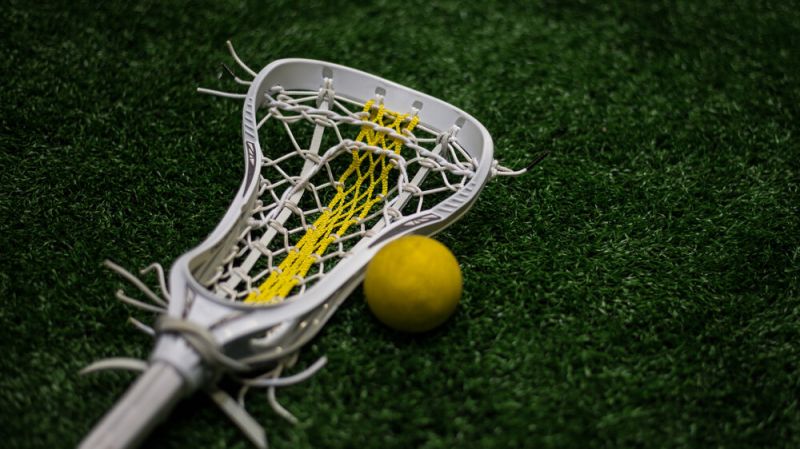
When selecting a new lacrosse head, compare the weight savings of composite versus metal ball stops. The lighter composite can improve speed and quickness.
Most budget and mid-tier heads use standard injection molded plastic for stops. While durable, this plastic can add unwanted ounces.
High-end heads from brands like Maverik and STX upgrade to aircraft-grade metals like aluminum. These shave weight but the cost is higher.
New tech composites like Warrior’s EnduraForm offer a third option. By reinforcing plastics with fibers, they maintain rigidity while dropping grams. They strike a nice balance between cost and weight.
Ounces matter most in the throat area since this is farthest from the shaft. Extra mass here raises swing weight that slows you down. So salving weight on stops gives a real quickness edge.
During comparisons, pay attention to the listed head weight and material descriptions. Also be sure to test swing speed during shooting to feel differences in velocity and ball speed off the stick.
In the end, don’t assume metal stops are automatically best. New composites let you shed weight without sacrificing ball control durability. Prioritizing swing speed gives you an advantage driving to goal or moving downfield.
